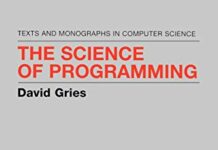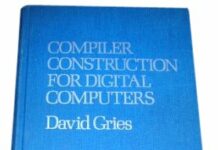
Ebook Info
- Published: 2005
- Number of pages: 554 pages
- Format: PDF
- File Size: 2.98 MB
- Authors: David Gries
Description
This book anchors its pedagogy in the program ProgramLive that you may find at extras.springer.com, a complete multimedia module in itself. Containing over 250 recorded lectures with synchronized animation, ProgramLive allows users to see, first-hand and in real time, processes like stepwise refinement of algorithms, development of loops, execution of method calls and associated changes to the call stack, and much more. The zip file also includes all programs from the book, 35 guided instruction sets for closed lab sessions, and a 70-page hyperlinked glossary.With its comprehensive appendices and bibliography, systematic approach, and helpful interactive programs on extras.springer.com, this exciting work provides the key tools they needed for successful object-oriented programming. It is ideal for use at the undergraduate and graduate beginning level, whether in the classroom or for distance learning; furthermore, the text will also be a valuable self-study resource or reference volume in any programmer’s library.
User’s Reviews
Reviews from Amazon users which were colected at the time this book was published on the website:
⭐To anyone taking Java at Cornell, PLEASE READ THIS. Professor Gries tries to use an analogy to explain objects and classes based on folders (objects) in a file drawer (classes). This is OK for some aspects of OOP, but he takes it way too far. An object is NOT, I repeat, NOT a variable in the sense you are used to from Matlab or a variable containing a primitive type. An object is a POINTER, a pointer a pointer a pointer. If he would just say this, it’d save everyone a tremendous amount of frustration. If you don’t know what a pointer is, look it up on Wikipedia or something.The basic idea though, is a pointer is a variable that contains the memory address (points) to another variable. So, an object contains the memory address of an allocated block up memory set up according to a template called the class. When you make a new object, you allocate a block of memory for the stuff an instance of the class must contain AND assign the memory address to access this block to a variable, which is the name of the object. You can have multiple pointers pointing to the same memory address and thus both changing the same memory address.I’m not a CS major, so there may be some minor inaccuracies in what I’ve said, but for non-computer related engineers required to take transition to Java or similar, this should be fine. I hope this helps some people.
⭐One of the authors of this book, David Gries, is my Computer Science teacher and hearing his voice (and that of his son Paul) on the multimedia CD is a weird experience, but extremely helpful. I can’t stand just reading textbooks, and the multimedia CD allows me to have an interactive learning experience and not just stare at pages. The book is great as well but the learning CD is really what stands out. There are videos, exercises, sample programs, labs, you name it. Very easy to learn Java with it.
⭐Note for the public:Springer, the publisher, has failed to include the CD in some of the new printed copies. This is a known issue. Considering that the other reviewers consider the CD the key benefit of this book, this is a serious error.You may be able to get a replacement software download from the publisher.
Keywords
Free Download Multimedia Introduction to Programming Using Java 2005th Edition in PDF format
Multimedia Introduction to Programming Using Java 2005th Edition PDF Free Download
Download Multimedia Introduction to Programming Using Java 2005th Edition 2005 PDF Free
Multimedia Introduction to Programming Using Java 2005th Edition 2005 PDF Free Download
Download Multimedia Introduction to Programming Using Java 2005th Edition PDF
Free Download Ebook Multimedia Introduction to Programming Using Java 2005th Edition

